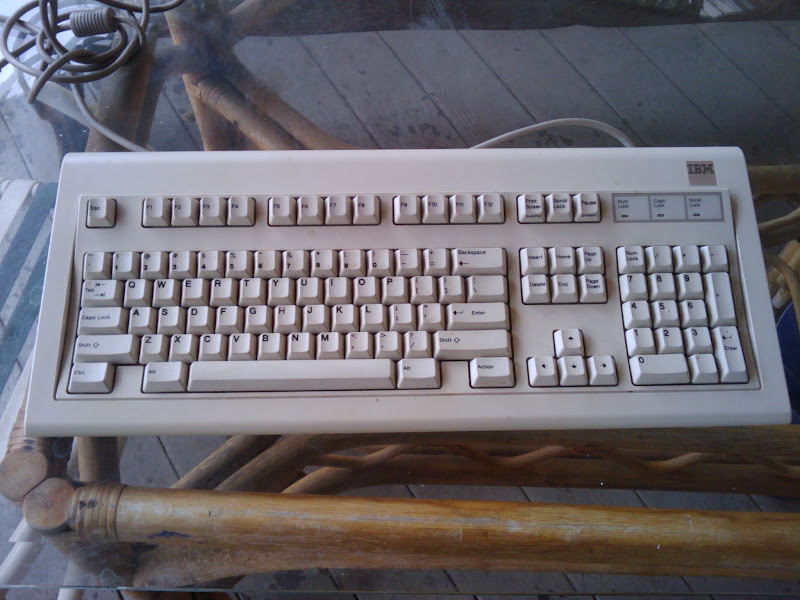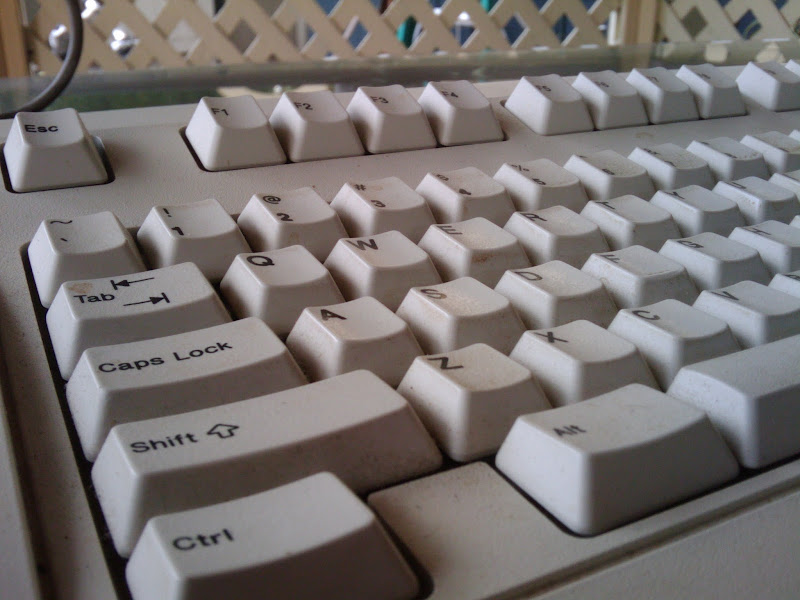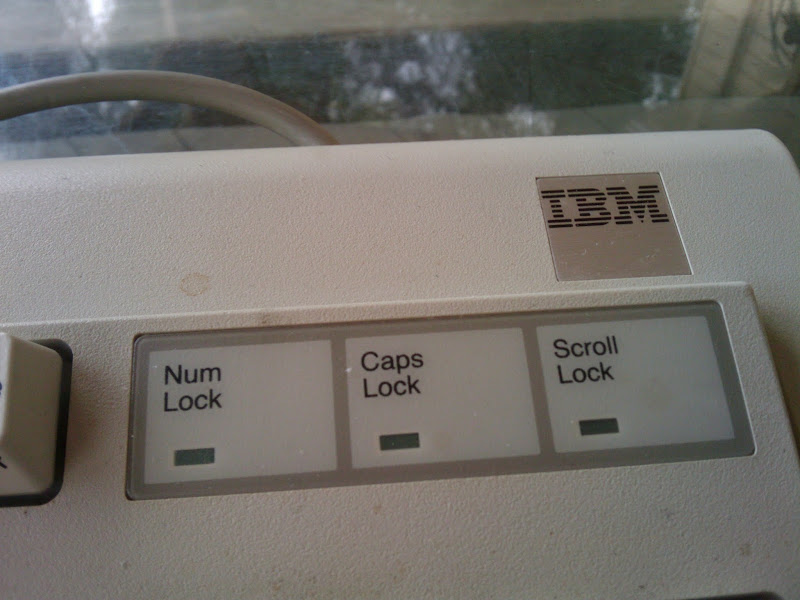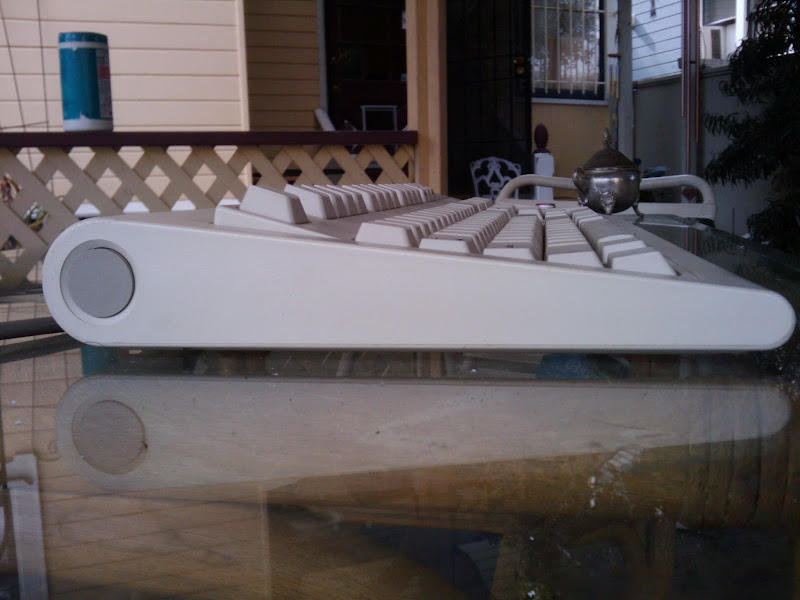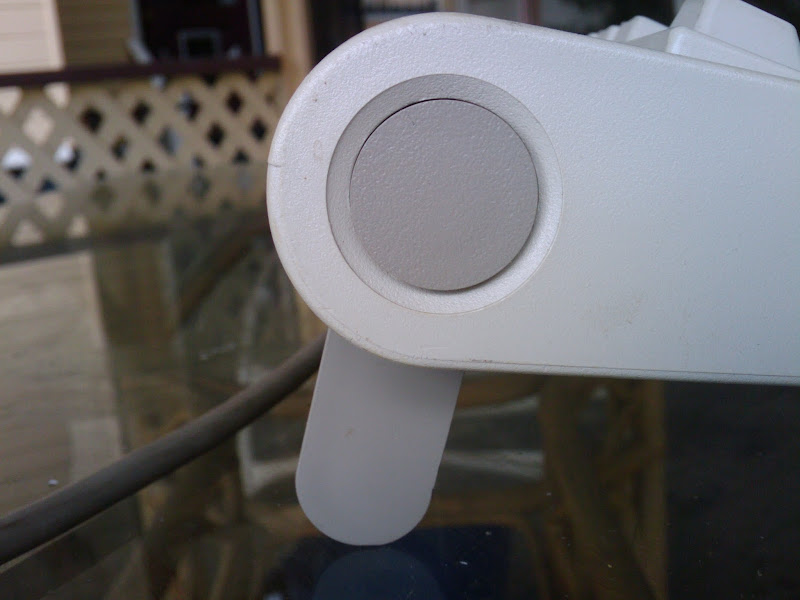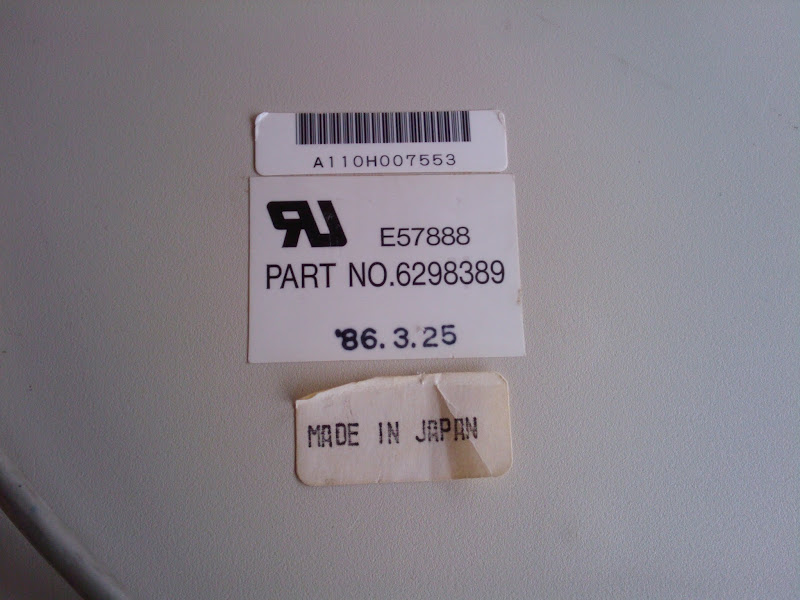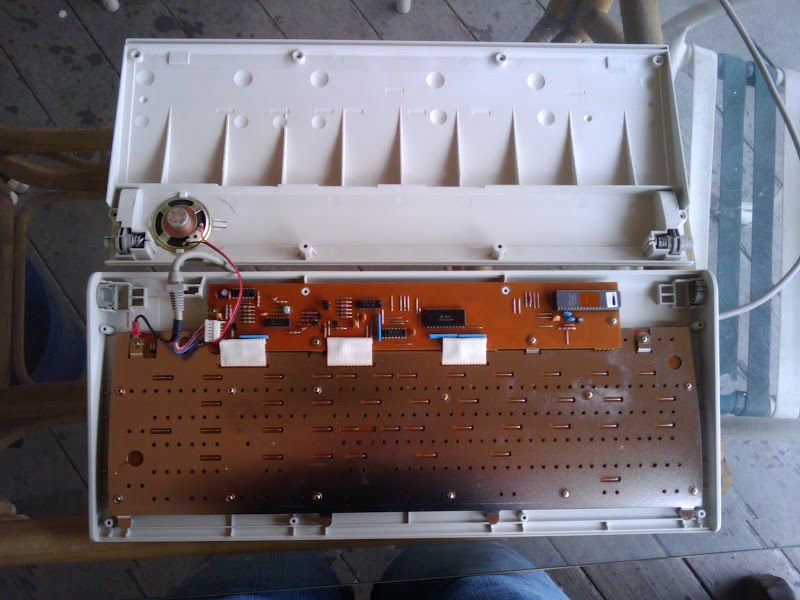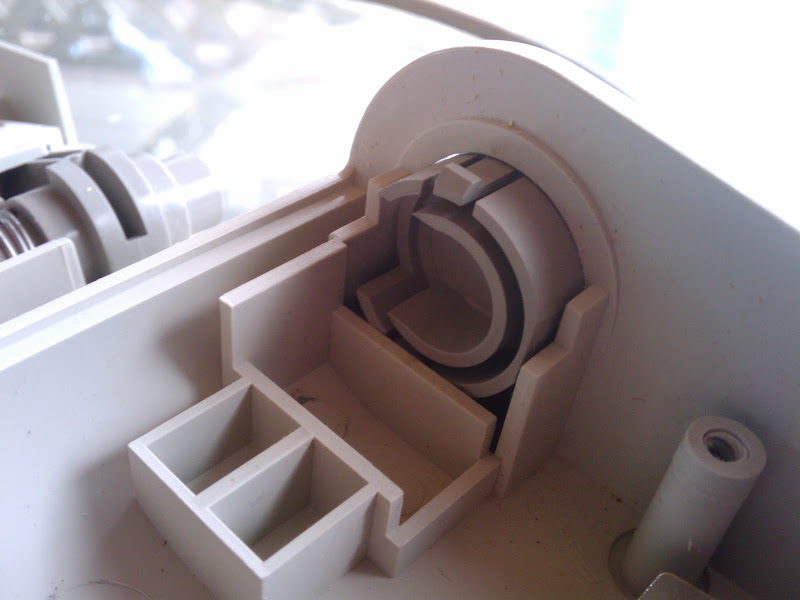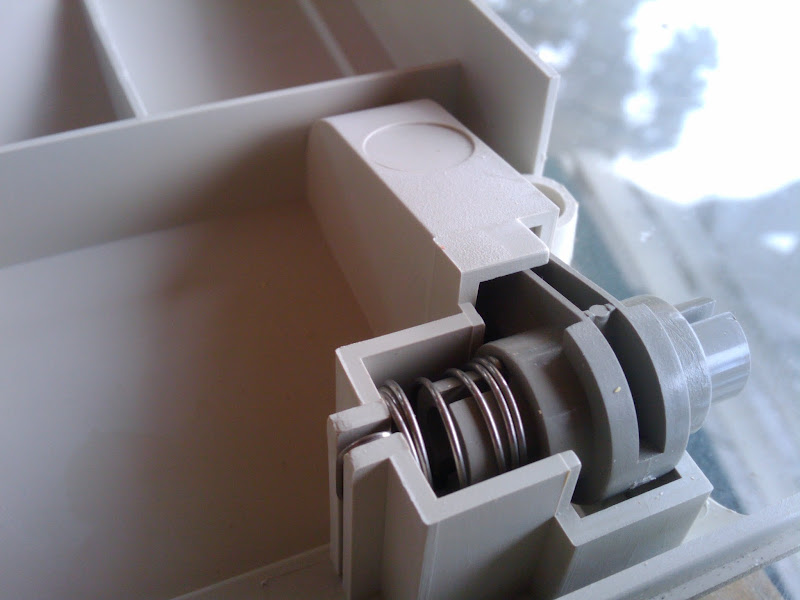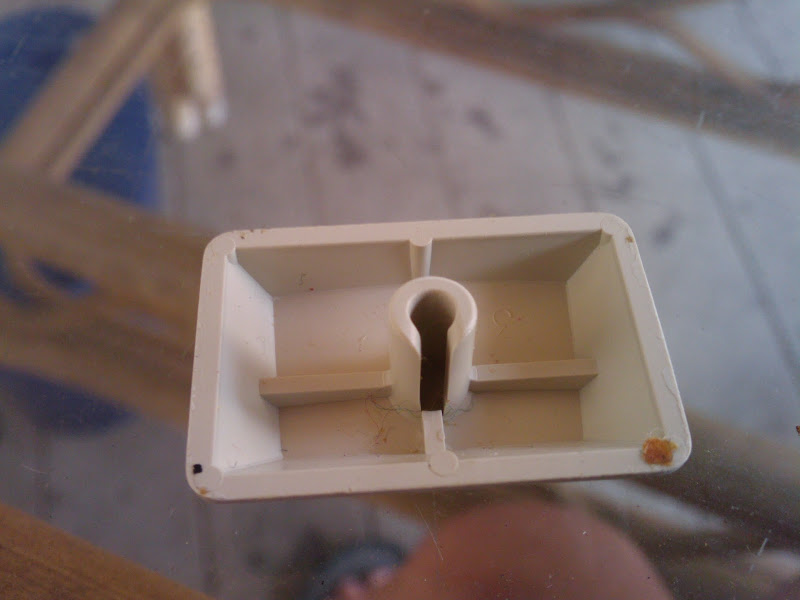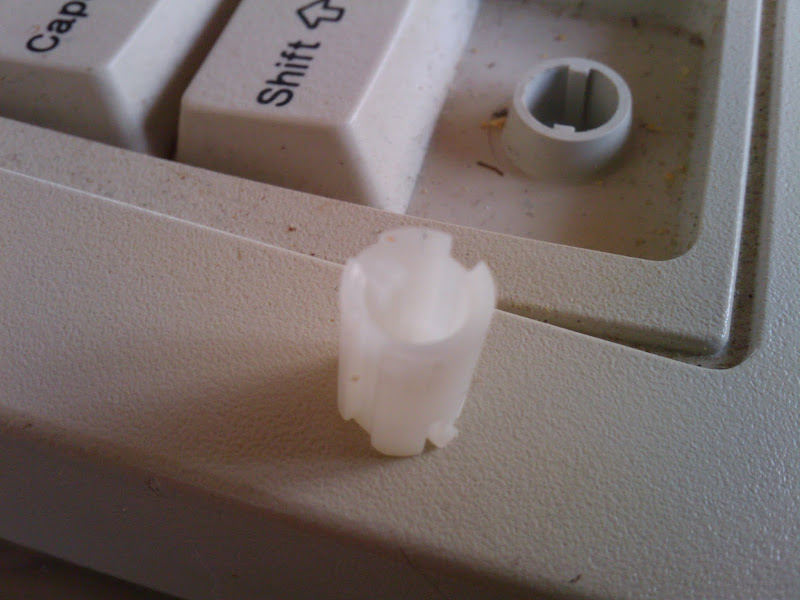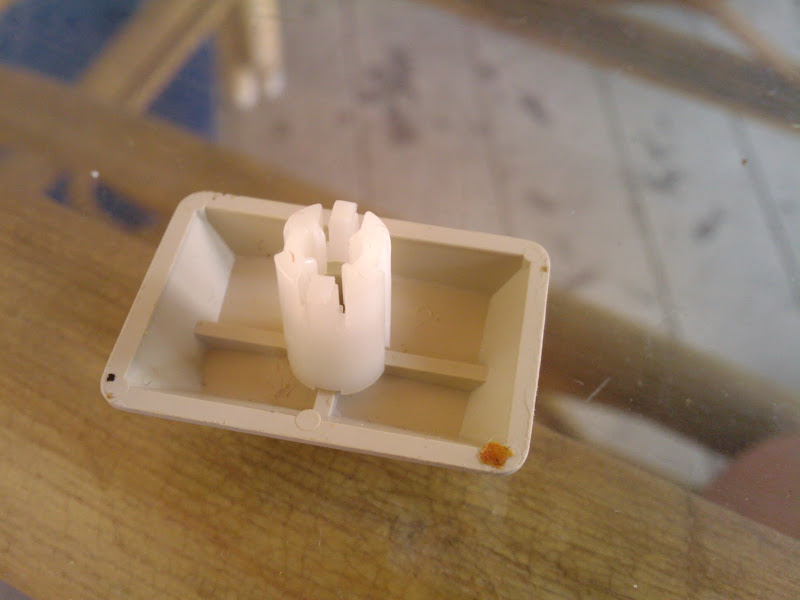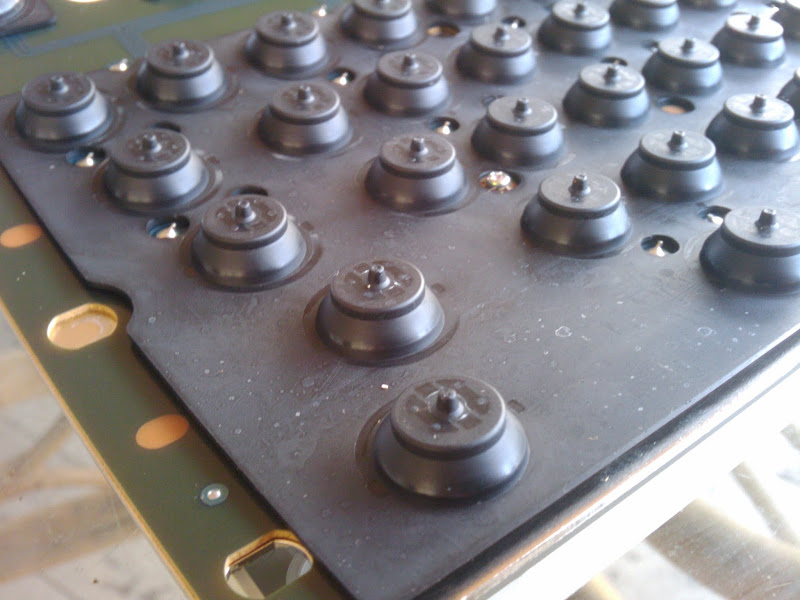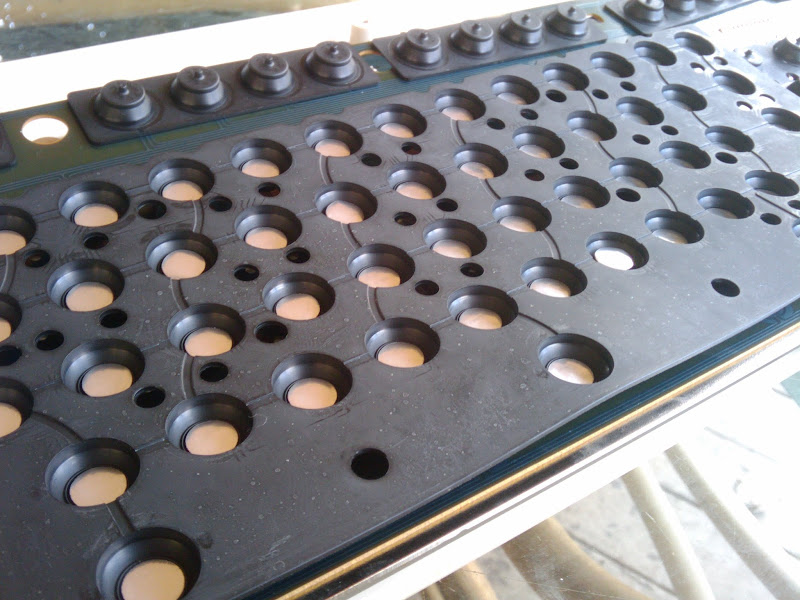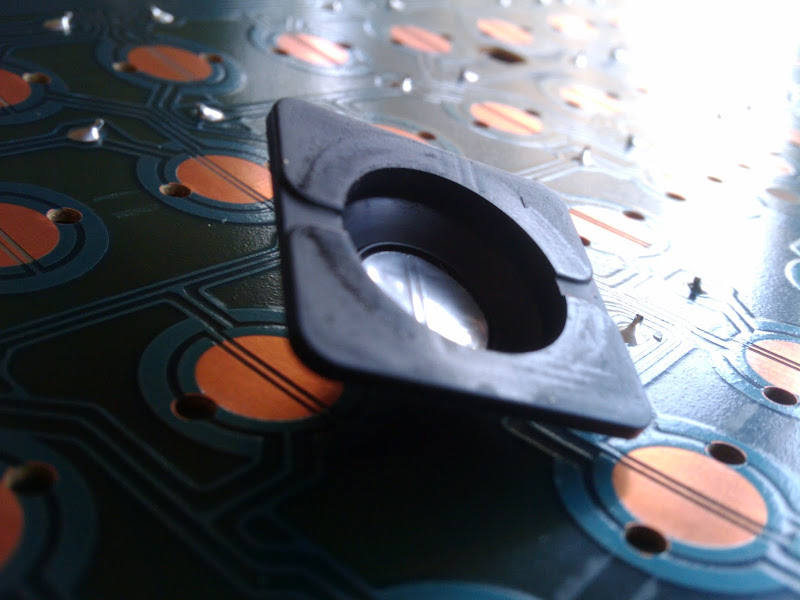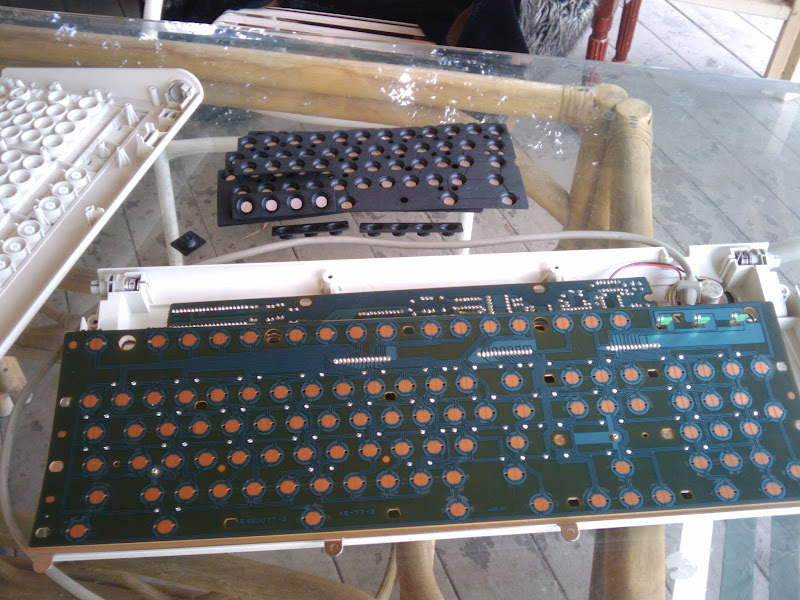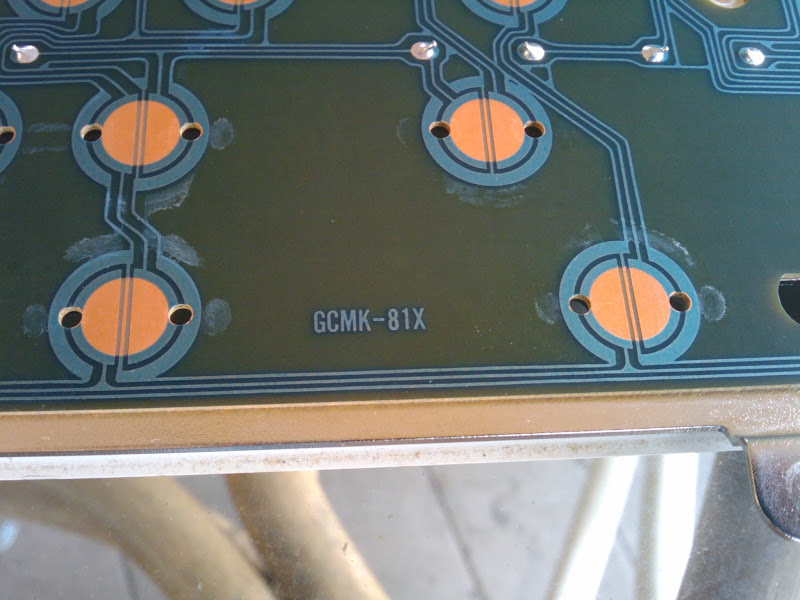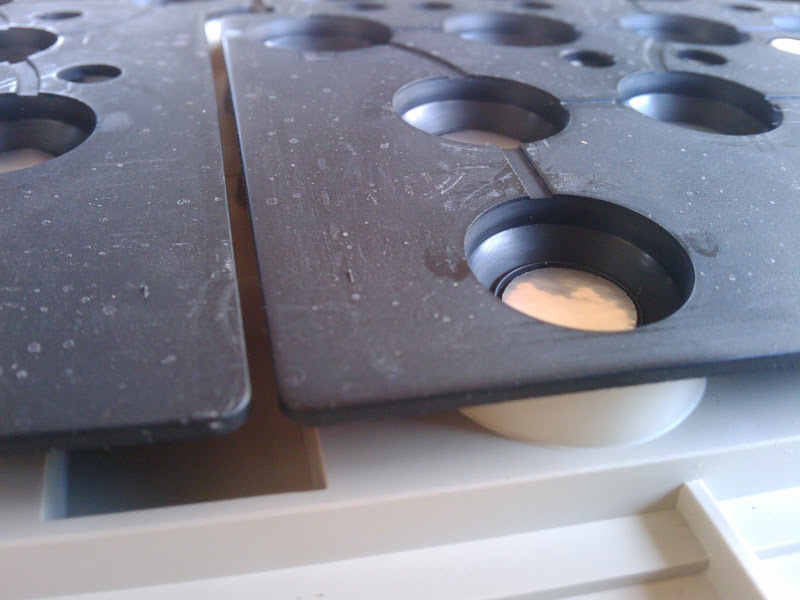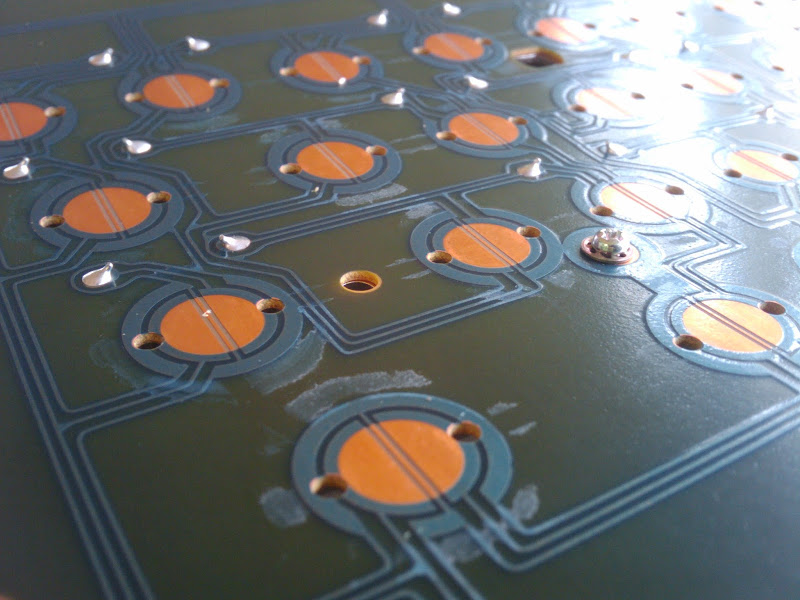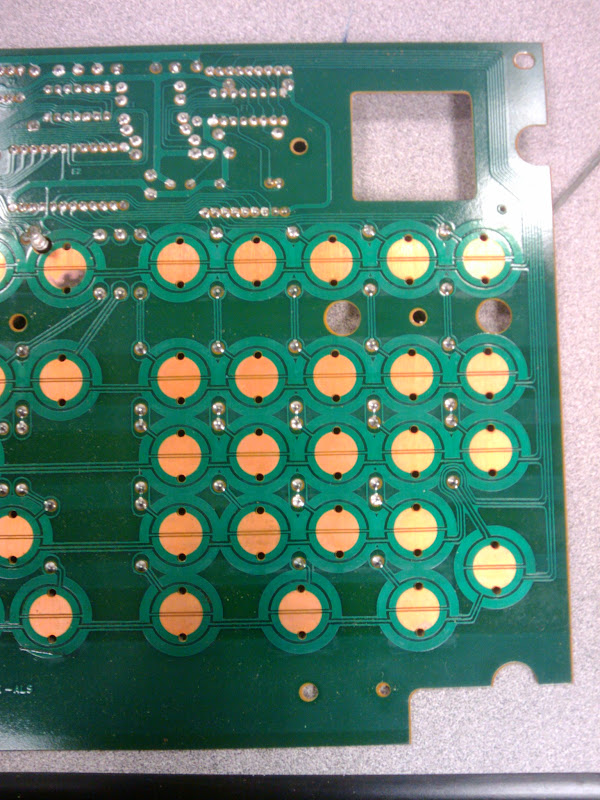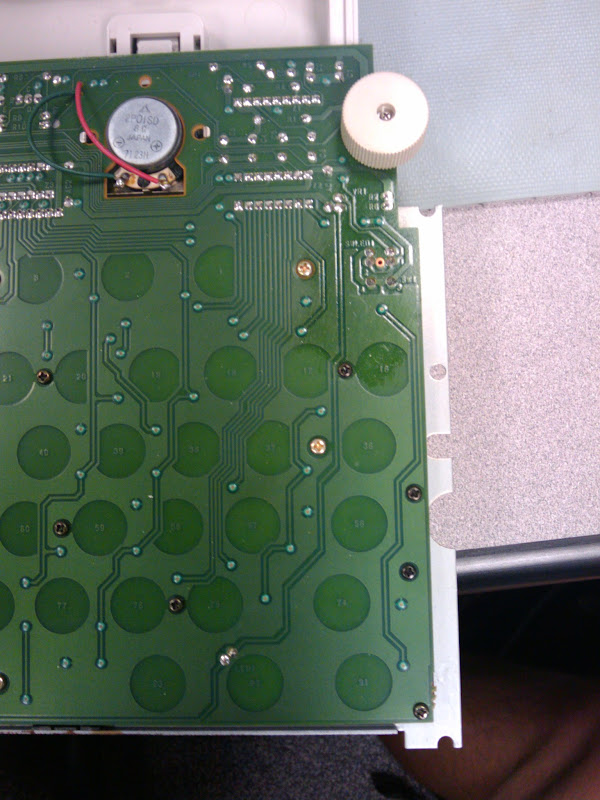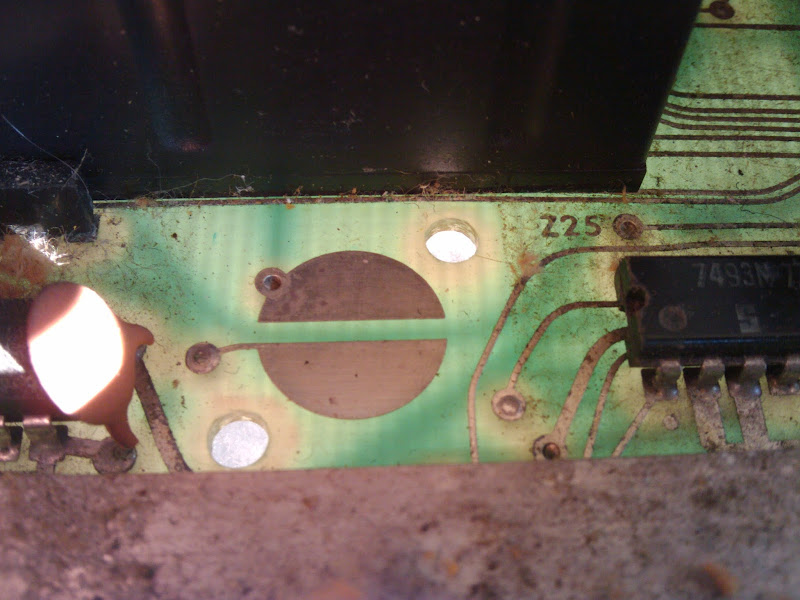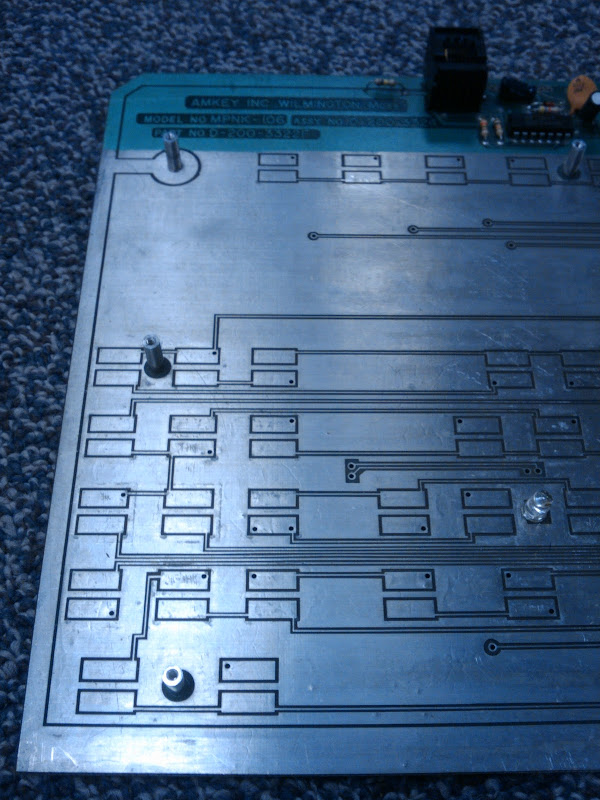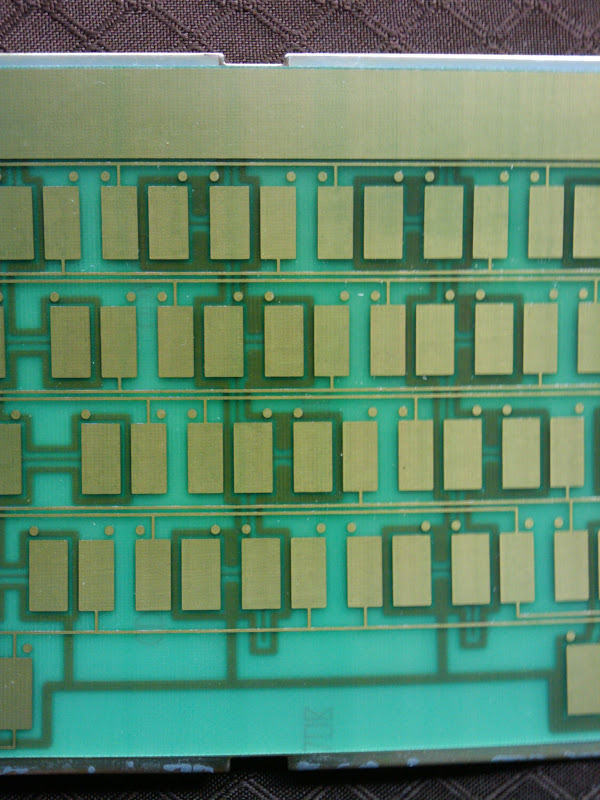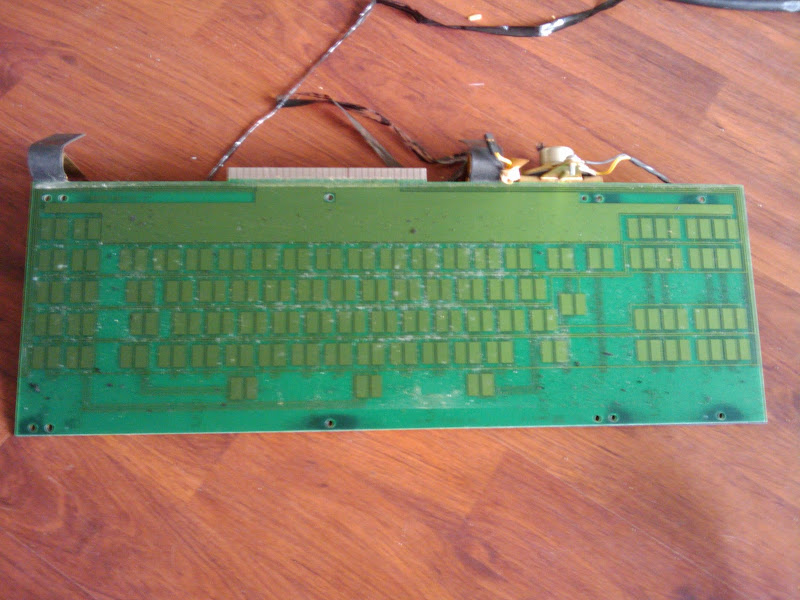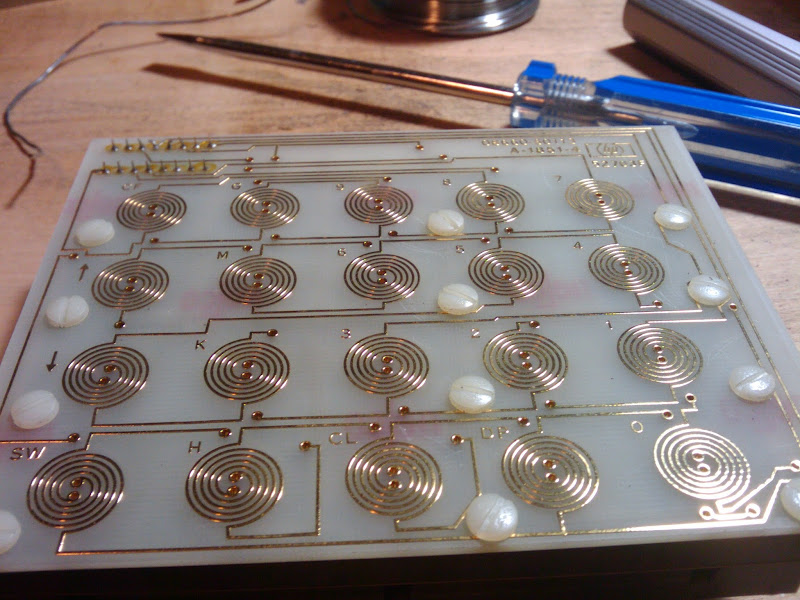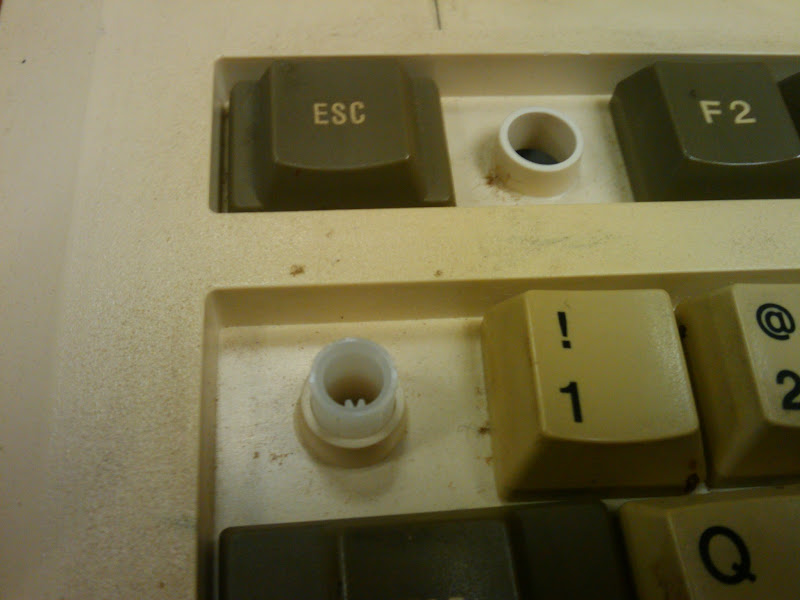Page 1 of 1
IBM RT E57888
Posted: 18 Oct 2012, 01:38
by HaaTa
Posted: 18 Oct 2012, 09:55
by javifast
Nice and interesting keyboard.
Posted: 18 Oct 2012, 10:19
by Half-Saint
How do you keep coming up with such amazing stuff??
Posted: 18 Oct 2012, 11:11
by webwit
That's pretty interesting. If you ever want to sell it, you know who to contact

Re: IBM RT E57888
Posted: 18 Oct 2012, 11:12
by cactux
[Account and posts deleted on request]
Posted: 18 Oct 2012, 15:04
by laggy-gaga
put me in the wait list~
Posted: 18 Oct 2012, 15:36
by Icarium
Just get a 55g Topre. :p
Posted: 18 Oct 2012, 16:48
by mbodrov
This is the IBM RT PC workstation keyboard. We had a few at the uni, 26 inch monitors in the 1990s, pretty cool stuff. I still have one of the keyboards, which I picked up when they were throwing it all away. The keys feel GREAT for rubber dome, too bad it isn't compatible with modern computers. This is foam-and-foil capacitive technology, fairly common for the time. I vaguely remember reading that it's Keytronic OEM, so purely an American design with no direct relation to Topre.
Posted: 18 Oct 2012, 21:17
by HaaTa
I don't think it's Keytronic, the PCB design is not even close, and most Keytronic stuff comes out of Spokane Washington (and this was made in Japan).
But yeah, I have no definitive evidence, just stuff pointing towards it being related to Topre keyboards.
My current theory is that Topre hired away the guy that did the original design for this particular keyboard switch.
Well, before I think about selling mine, gotta build a USB converter. Maybe after that though.
I will keep my eyes open though, as they pop up from time to time.
Posted: 18 Oct 2012, 21:18
by Parak


?
Posted: 18 Oct 2012, 22:14
by Icarium
HaaTa wrote:I don't think it's Keytronic, the PCB design is not even close, and most Keytronic stuff comes out of Spokane Washington (and this was made in Japan).
But yeah, I have no definitive evidence, just stuff pointing towards it being related to Topre keyboards.
My current theory is that Topre hired away the guy that did the original design for this particular keyboard switch.
Well, before I think about selling mine, gotta build a USB converter. Maybe after that though.
I will keep my eyes open though, as they pop up from time to time.
As usual I will repeat that you should absolutely and always tell us about all your interesting finds which you don't want because you already have them. I acknowledge that this description is inherently contradictory because things you don't want you will not find interesting. Please try anyway.

Posted: 18 Oct 2012, 23:35
by HaaTa
I tend to chat more about this sorta thing on IRC

.
It would be nice having daily logs available here on the forums (webwit, hint hint).
Sadly, for me to give a brain dump of info...it would take days, if not weeks...discussing each of my keyboards. Why it's interesting, or not. I often jump into patent searching too, which gives a different perspective altogether of switch lineage (if there are patents).
I have a few interesting finds sitting right here under my desk, but just haven't gotten a chance to take pictures of them

My current project (building a custom keyboard switch from scratch), has been eating away most of my free time (currently in prototype testing).
Posted: 19 Oct 2012, 02:53
by mbodrov
If you make a USB converter for this, you'll be my hero. Like I said, this keyboard is built extremely well and feels great to type on.
Which way are you planning to go with the converter: reverse-engineer the protocol, or build a converter that can poll a capacitive PCB?
Posted: 19 Oct 2012, 06:35
by HaaTa
Usually I just reverse-engineer the protocol as I don't like to modify the keyboard directly unless I absolutely have to.
Now, I may have to, depending. The other keyboard I have like this, only sends signals on press, and the signals are ASCII, so it's really annoying to do modifiers (Ctrl + ALT + K for example).
But to be sure I'll have to sit down and probe it. It's an IBM keyboard so the protocol should be at least sorta sane...I hope.
mbodrov, bug me on IRC every once in a while. I often get side-tracked, and keyboards get dropped to the bottom of my "To make converters for" pile if I lose interest for any sort of reason.
Posted: 19 Oct 2012, 07:37
by mbodrov
For future reference, and for the sake of keeping information in one place, I'm going to quote the relevant section from the comp.sys.ibm.pc.rt FAQ (
http://www.contrib.andrew.cmu.edu/~shad ... rdware.txt)
-------------------------
H.12 - What is the pinout of the 6150/6151 Keyboard port?
Here is pin-out and information on an RT keyboard.
More information is available from "IBM RT PC Hardware Technical
Reference" Volume 1 P/N 75X2032, Chapter 9 pages 9-3 thru 9-23,
and from Chapter 5, pages 5-85 thru 5-114.
[ The connector is a AMP type, I don't yet have the P/N of how to get
the parts to construct one. Anybody? - MW ]
Connector Specifications:
(view is looking INTO the female connector socket on the cable attached
to the keyboard)
Code: Select all
+--------------+ 1 = +5 Volts
| 5 3 1 | 2 = Keyboard Data
| | 3 = Speaker Signal
- 6 4 2 - 4 = Speaker Return (+5V)
| | 5 = Ground
+----------+ 6 = Clock (diagrams in the book seem
to indicate that clock is generated
BY the keyboard)
Microprocessor in keyboard performs following functions:
- Self test at power-on or when requested by system.
- keyboard scanning.
- Buffering of up to four key scan codes.
- Executing the hand-shake protocol requred by each scan code transfer.
- full-duplex serial interface
- communicates with a 8255A PIO chip and a 8501 microprocessor
in the RT planar.
- 11 bit framing protocol.
IBM part numbers for the RT keyboard are:
1392366 Keyboard, United States English.
1392374 Keyboard, United Kingdom English.
1392373 Keyboard, Canadian-French.
Ten other part numbers are listed for other language layout keyboards.
-------------------------
H.13 - Can I use an AT keyboard on an RT?
NO. While most of the signals are the same, there are four
major differences:
1) There is a speaker in the keyboard.
2) The physical connector is not the same.
3) Some of the scan codes are different.
4) Some of the programing commands are not implemented in
the AT keyboard.
Difference 1 and 2 are managable, but 3 and 4 imply some way
is needed to alter the keyboard ROM chips, or basic hardware.
[ ANY input on how to hack a keyboard for RT compatibility is
gladly welcomed! - MW ]
-------------------------[/color]
Posted: 19 Oct 2012, 08:43
by HaaTa
As something to add about the AMP connector, kishy, while talking with him on IRC the other day:
kishy on irc wrote:
what's funny is...it's extremely similar to what Ford used on car stereos with factory amplifiers that connector has a locking tab on it, but it's the same shape and I think it's similar in size, but then I haven't seen the IBM connector in person
kbdbabel has some info as well. Though in my case I usually just verify the pinout, power the keyboard, then start probing it with a scope and logic analyzer.
Posted: 22 Oct 2012, 08:36
by TheQsanity
Does it feel nice? Some people say that Topre are the best. Is this Close, the same, better?
Posted: 22 Oct 2012, 09:05
by HaaTa
I'd say similar. Topre is snappier, but really only on the depress.
I haven't actually used the keyboard to tryout actuations yet. But I'll get to that soon

Posted: 22 Oct 2012, 15:04
by forcefollow
HaaTa, any clue on how topre is involved in this board?
btw, a bit OOT here, you're right about the μtron screws.. I'm in the process of dismantling it now.. sorry it took a long time (and you know how topre boards are loaded with screws on their pcbs

), will post the photos as soon as I got spare time.
Posted: 22 Oct 2012, 23:40
by HaaTa
Posted: 23 Oct 2012, 00:07
by 002
I am guessing that someone who was involved with creating the switch design seen on this IBM board eventually was employed by Topre and created their capacitive switch, or Topre looked at what was being used in banks and other office environments of the time and chose a design to copy.
The earliest Topre board I have seen is the Sony NEWS NWP-411A which is 1986 but this was not the earliest board they made according to them. They started making boards for banks before this but couldn't get a date or any model numbers from them.
Posted: 23 Oct 2012, 02:44
by sth
i claimed buying rights at the meetup over a month ago!
Posted: 23 Oct 2012, 19:52
by Parak
Disclaimer - I've never tried actual topre boards, but I'm not much of a fan of my IBM prototopre after the initial impressions. The snapback is either too slow or too fast and hard, which might have something to do with the age of the domes. If topre boards age in the same way, I'll throw an obvious flamebait out there in that I'm not impressed at all and expected more based on the cost and popularity

Posted: 23 Oct 2012, 20:25
by mbodrov
HaaTa wrote:I'd say similar. Topre is snappier, but really only on the depress.
I agree. The RT is smoother, which I actually like, but this is a matter of personal preference, and somebody else may like the crisper feel of Topre.
Posted: 16 Feb 2013, 03:22
by picnicker
Hi HaTaa,
you don't happen to have built that USB converter by now?!
I got one of these keyboards with a QWERTZ-layout.
Posted: 01 Mar 2013, 00:05
by HaaTa
My minimal investigation of the protocol of the IBM RT shows that it's very PS/2 like (if not exact). So it's less interesting to me, but completely doable. Bug me once I get back to California in September'ish.
Posted: 27 Mar 2013, 15:15
by Soarer
